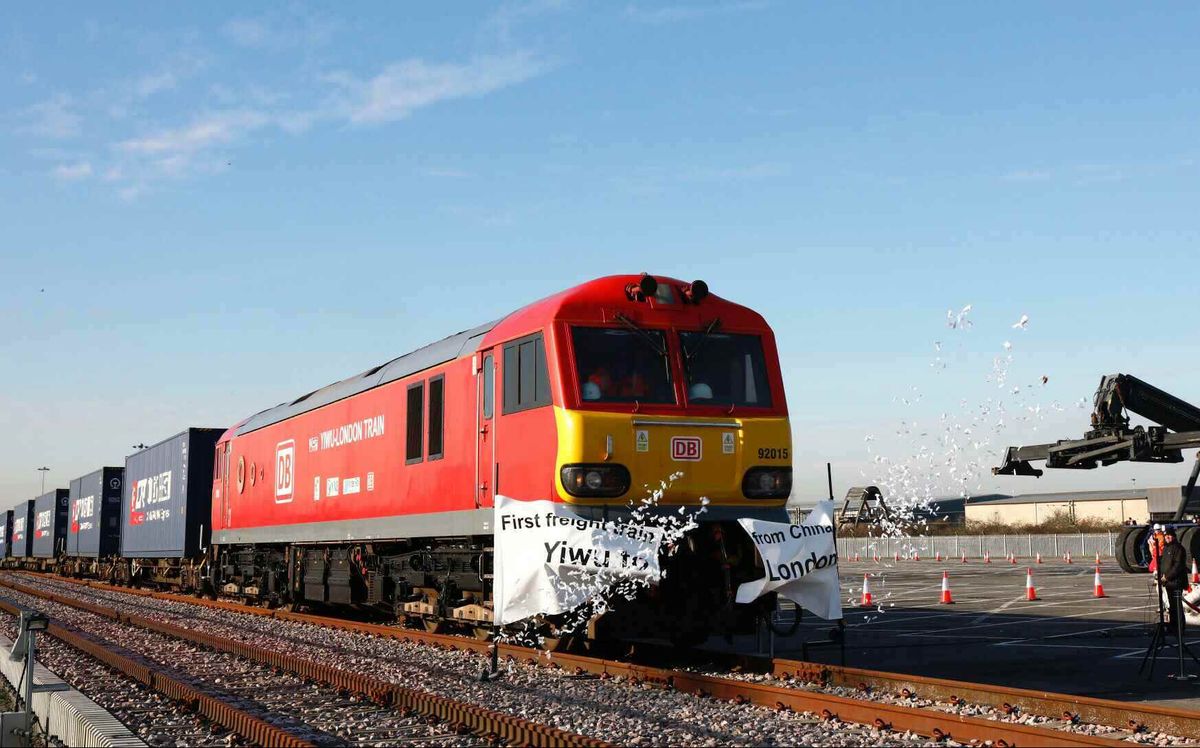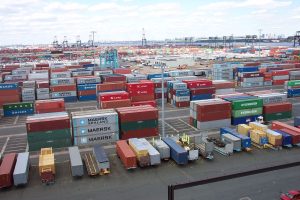Securing receivables in the international rail freight sector is crucial for maintaining cash flow and mitigating financial risks. The complexity of cross-border transactions, coupled with the unique challenges of the rail freight industry, necessitates a comprehensive approach to safeguard against potential defaults and losses. This article delves into strategies ranging from legal frameworks to technological innovations, offering insights into how businesses can protect their financial interests while ensuring smooth international operations.
Key Takeaways
- Understanding the specific risks in international rail freight, such as political instability and counterparty creditworthiness, is the foundation of effective receivables security.
- Establishing a solid legal framework, including robust freight contracts with retention of title clauses, can provide significant protection against non-payment.
- Financial instruments like letters of credit, surety bonds, and factoring offer tangible security measures for receivables in the international rail freight sector.
- Credit insurance plays a pivotal role in risk mitigation, with the right policy and an efficient claims process ensuring that losses can be recovered.
- Technological solutions, including receivables tracking systems and blockchain, enhance transparency and security in international rail freight transactions.
Understanding the Risks in International Rail Freight
Identifying Common Risks
In the international rail freight sector, we’re exposed to a myriad of risks. Delays and disruptions can derail our schedules and impact our bottom line. We must also be vigilant about theft and damage, which are all too common in cross-border transport.
- Political instability can lead to unexpected detours or stoppages.
- Legal complexities may arise from differing international regulations.
- Currency fluctuations can affect the value of our receivables.
Ensuring the safety and timely delivery of goods is paramount. We must proactively identify and manage these risks to safeguard our receivables.
By understanding these challenges, we can devise strategies to mitigate them and secure our financial interests.
Evaluating Country-Specific Challenges
When we venture into the international rail freight sector, we must navigate a mosaic of local regulations, customs, and infrastructure quality. Each country presents a unique set of challenges that can impact our receivables.
We prioritize understanding the local landscape to mitigate risks effectively. This includes analyzing political stability, economic policies, and legal systems that could affect payment and delivery terms.
Regulatory hurdles can vary significantly from one nation to another, and they often dictate the level of risk we’re exposed to:
- Political and economic instability
- Currency exchange fluctuations
- Legal system complexity
- Infrastructure reliability
By proactively assessing these factors, we can tailor our strategies to secure receivables against country-specific risks.
Assessing Counterparty Creditworthiness
When we delve into the realm of international rail freight, assessing the creditworthiness of our counterparts is a cornerstone of securing receivables. We must scrutinize their financial health to mitigate the risk of non-payment. This involves analyzing their credit history, financial statements, and payment behaviors.
Credit scoring models can be invaluable tools in this process. They provide a quantitative measure of a counterparty’s credit risk, allowing us to make informed decisions. Here’s a simplified example of what factors might be considered in such a model:
| Factor | Description |
|---|---|
| Payment History | Timeliness of past payments |
| Debt Level | Total outstanding debts |
| Financial Ratios | Liquidity, profitability, and leverage indicators |
| Industry Trends | Sector-specific risks and opportunities |
| Country Risk | Political and economic stability |
We must remember that creditworthiness is not static. It evolves with market conditions and the financial trajectory of our partners. Regular monitoring is essential to stay ahead of potential risks.
By integrating these assessments into our broader risk management framework, we can better protect our receivables and ensure the financial stability of our operations in the volatile international rail freight market.
Legal Frameworks and Contractual Safeguards
Navigating International Trade Laws
In the complex world of international rail freight, we must navigate a labyrinth of trade laws. Understanding the legal landscape is crucial to secure our receivables. Different countries, different rules – it’s a legal jigsaw puzzle.
To ensure compliance, we prioritize:
- Familiarity with the Uniform Commercial Code (UCC)
- Knowledge of the Convention on International Interests in Mobile Equipment (CIM)
- Adherence to the International Commercial Terms (Incoterms)
We must be vigilant in aligning our contracts with international standards to avoid costly disputes.
Staying abreast of legal changes is not just about defense; it’s about leveraging laws for better security. We’re proactive, not reactive, when it comes to legal frameworks.
Drafting Robust Freight Contracts
In the high-stakes game of international rail freight, we anchor our security in the bedrock of robust contracts. These are not just documents; they’re shields against uncertainty, meticulously crafted to protect our receivables.
Clarity is our guiding principle. We ensure every term is precise, every obligation clear. Our contracts are comprehensive, leaving no room for ambiguity. Here’s what we focus on:
- Defining clear roles and responsibilities
- Specifying payment terms and conditions
- Outlining dispute resolution mechanisms
- Incorporating applicable law and jurisdiction
We don’t just prepare for the expected; we anticipate the unexpected, embedding contingencies for every conceivable scenario.
By doing so, we transform our contracts into a fortress, safeguarding our financial interests across borders and through the complexities of international trade.
Incorporating Retention of Title Clauses
We must wield contracts as strategic tools, ensuring our receivables are secure. Retention of title clauses are our shield, granting us the right to retain ownership of goods until full payment is received. It’s a simple yet powerful mechanism: if a buyer defaults, we reclaim our goods.
Retention of title clauses vary by jurisdiction, so we tailor them to each country’s legal nuances. Here’s a quick checklist to ensure they’re ironclad:
- Verify the clause is enforceable in the destination country
- Clearly define the goods subject to retention
- Specify the conditions for transferring ownership
- Outline the process for reclaiming goods
We must be vigilant in drafting these clauses. A single oversight could weaken our position, leaving us vulnerable to losses.
Incorporating these clauses is not just about legal protection; it’s about sending a clear message to our partners. We’re committed to fair trade, but we’re also prepared to protect our interests. Insurance and guarantees are additional layers of security, but they require careful evaluation. They must be woven seamlessly into our broader risk management strategies to ensure comprehensive protection.
Financial Instruments for Receivables Security
Utilizing Letters of Credit
In our quest to secure receivables, we turn to letters of credit (LCs) as a cornerstone. They offer a guarantee from the buyer’s bank, ensuring payment upon delivery of goods. This shifts the risk from the buyer to a more creditworthy institution.
- LCs protect us against buyer default.
- They provide assurance of payment.
- They help in managing cash flow effectively.
By leveraging LCs, we convert our receivables into more predictable, bank-assured cash flows. This is crucial in the volatile international rail freight sector.
While LCs are powerful, we must navigate them with care. The securitization of assets, including receivables, can indeed transform them into liquid capital. However, we’re mindful of the inherent credit risks. For complex debt recovery, we might consider partnering with specialists like DCI.
Exploring Surety Bonds and Guarantees
In our quest to secure receivables, we turn to surety bonds and guarantees as our stalwarts. These instruments act as a promise from a third party, assuring the fulfillment of a supplier’s obligations. Surety bonds provide a safety net, ensuring that we’re protected in case of non-performance.
Guarantees are similar, yet distinct. They offer a pledge that a certain action will be completed or a payment made. We often see them in the form of advance payment guarantees or performance bonds. Here’s how they typically work in our sector:
- Advance Payment Guarantee: Secures the return of advance payments if goods or services are not delivered.
- Performance Bond: Ensures contract completion in accordance with terms.
By diligently monitoring payment delays, disputes, and order patterns, we can often get ahead of financial distress. It’s crucial to mitigate risks with strategies like advance payments, escrow accounts, performance bonds, and guarantees.
Remember, the key is to tailor these instruments to the specific needs of the transaction. They’re not one-size-fits-all, but when used correctly, they can be powerful tools in our receivables security arsenal.
Factoring and Forfaiting as Alternatives
In the quest to secure our receivables, we often turn to factoring and forfaiting. These alternatives provide immediate cash flow and mitigate credit risk. Factoring involves selling our invoices at a discount to a third party. This third party, the factor, takes on the responsibility of collecting the debt.
Forfaiting, on the other hand, is typically used for larger transactions. It involves selling our medium to long-term receivables at a discount. The forfaiter assumes all the risks associated with the receivables, giving us peace of mind.
Both factoring and forfaiting free up working capital and allow us to focus on core business activities without the burden of debt collection.
Here’s a quick comparison:
- Factoring is best for short-term receivables.
- Forfaiting suits longer-term receivables, usually tied to capital goods.
- Factoring can be with recourse (we’re liable if the debtor doesn’t pay) or without recourse (the factor assumes the risk).
- Forfaiting is always without recourse, providing complete risk transfer.
By integrating these tools into our receivables management strategy, we can enhance our financial stability and continue to thrive in the international rail freight sector.
Credit Insurance and Risk Mitigation
Choosing the Right Credit Insurance Policy
When we secure our receivables, selecting the appropriate credit insurance policy is crucial. It’s about balancing coverage and cost to protect against non-payment risks. We must scrutinize policy details to ensure they align with our specific needs in the rail freight sector.
Credit insurance policies vary widely, and we need to compare them on several fronts:
- Coverage scope: Does it cover all the countries and clients we deal with?
- Claim filing process: Is it straightforward and supportive during a claim?
- Premium rates: Are the costs justifiable given the level of risk?
- Policy exclusions: What scenarios are not covered?
It’s imperative to understand the fine print. A policy that seems cost-effective on the surface may have exclusions that leave us vulnerable.
We’ll also consider the insurer’s reputation and track record. A reliable partner is essential for long-term security in our receivables management.
Claims Process and Recovery
Once we’ve secured our credit insurance policy, the next critical step is navigating the claims process. Timely and accurate claims filing is crucial for swift recovery. We must understand the documentation required and adhere to the deadlines set by the insurer.
- Gather all necessary documents, including invoices and proof of delivery.
- Notify the insurer immediately upon a default event.
- Submit a detailed claim form within the stipulated time frame.
Recovery efforts should be methodical and persistent. We must follow up regularly and provide any additional information the insurer may require to process the claim.
Finally, integrating the claims process with our overall risk management strategy ensures that we learn from each incident and continuously improve our safeguards against future risks.
Integrating Insurance with Other Risk Management Strategies
We’ve secured our receivables with credit insurance, but our strategy doesn’t end there. Diversification is key; we spread our risks across different markets and customers to minimize exposure. We also maintain strong relationships with our clients, ensuring open communication and prompt issue resolution.
Regular reviews of our risk management policies keep us ahead of the curve, adapting to new threats as they arise. We integrate insurance with:
- Rigorous credit control procedures
- Effective dispute resolution mechanisms
- Proactive monitoring of market conditions
By seamlessly blending insurance with comprehensive risk management practices, we create a robust shield against potential financial losses.
Our approach is dynamic, evolving with the shifting landscape of international rail freight. We’re committed to protecting our receivables, our business, and our stakeholders.
Technological Solutions for Receivables Management
Implementing Receivables Tracking Systems
In the fast-paced world of international rail freight, we understand the importance of staying on top of our receivables. Implementing receivables tracking systems is a game-changer. It allows us to monitor our financial health in real-time and respond swiftly to any discrepancies.
Visibility is key. With the right system in place, we can track every invoice from issuance to settlement. This transparency helps us to identify potential issues before they escalate, ensuring that our cash flow remains steady.
- Real-time invoice tracking
- Automated alerts for overdue payments
- Easy access to payment histories and customer data
By proactively managing our receivables, we safeguard our financial stability and build stronger relationships with our clients. A robust tracking system is not just a tool; it’s an integral part of our risk management strategy.
The Role of Blockchain in Securing Transactions
In our quest to secure receivables, we’ve turned to the cutting-edge capabilities of blockchain technology. Blockchain acts as a digital ledger, providing an immutable record of transactions that enhances transparency and trust among parties. With blockchain, we can track the movement of goods and the corresponding payments with unprecedented accuracy.
Smart contracts automate and enforce the terms of an agreement, reducing the risk of disputes and delays. This is particularly beneficial in the complex environment of international rail freight, where multiple jurisdictions and stakeholders are involved.
- Verification of transaction authenticity
- Real-time tracking of goods and payments
- Reduction in paperwork and administrative errors
By integrating blockchain, we’re not only streamlining operations but also fortifying our defenses against fraud and non-payment.
Our approach aligns with the broader industry movement towards digital transformation. We’re identifying vulnerabilities, implementing technology, and collaborating with industry partners to enhance security measures across the board.
Automated Payment Systems and Their Benefits
In our quest to secure receivables, we’ve embraced automated payment systems. These systems are a game-changer, streamlining fee collection and slashing error rates. They’re not just about efficiency; they’re about ensuring payments land in our accounts on time, every time.
With automation, we’ve seen a tangible improvement in our financial health. Payment disputes have dwindled, and our cash flow is stronger than ever. It’s a robust solution that complements our strategies for managing overdue accounts and collecting unpaid bills.
The right automated system can transform the financial landscape of international rail freight, turning potential losses into reliable profits.
Here’s a snapshot of the benefits we’ve reaped from automation:
- Reduction in manual processing
- Fewer payment disputes
- Enhanced cash flow
- Improved customer satisfaction
In today’s fast-paced business environment, effective receivables management is crucial for maintaining cash flow and financial stability. At Debt Collectors International, we offer specialized technological solutions tailored to streamline your collections process and maximize recovery rates. Our experienced team employs cutting-edge tactics, from skip tracing to dispute resolution, ensuring your outstanding debts are handled with the utmost professionalism. Don’t let overdue accounts disrupt your business—take the first step towards financial peace of mind by visiting our website for a free rate quote and learn how our services can transform your receivables management.
Frequently Asked Questions
What are the common risks associated with international rail freight?
Common risks include cargo theft, damage during transit, delays, political instability in transit countries, currency fluctuations, and counterparty default.
How can I evaluate country-specific challenges in rail freight?
Evaluating country-specific challenges involves researching the political climate, legal system, infrastructure quality, and economic stability of each country your freight will pass through.
What should I consider when assessing counterparty creditworthiness?
Assessing creditworthiness should include examining the counterparty’s financial statements, credit ratings, payment history, and reputation in the market.
How do letters of credit work to secure receivables in international trade?
Letters of credit are financial instruments issued by a bank guaranteeing a buyer’s payment to a seller. They ensure that the seller will receive payment as long as the terms of the letter of credit are met.
What is credit insurance and how can it mitigate risks in rail freight?
Credit insurance protects sellers from non-payment by buyers, covering a portion of the receivable that is unpaid due to default, insolvency, or political risks.
Can blockchain technology improve the security of transactions in the rail freight sector?
Yes, blockchain can enhance transaction security by providing a tamper-proof ledger for documenting and verifying each step of the freight process, reducing the risk of fraud and errors.





